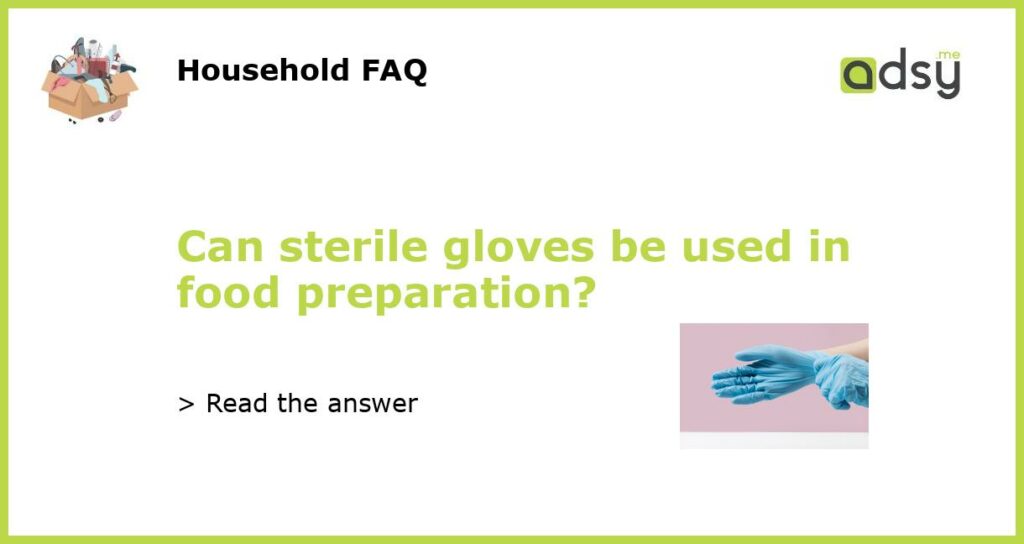Yes, sterile gloves can be used in food preparation
Sterile gloves are commonly used in medical settings to prevent contamination and transmission of bacteria and other harmful microorganisms. However, they can also be used in food preparation for similar reasons. Sterile gloves provide an extra layer of protection against cross-contamination, ensuring that the food being prepared remains safe and hygienic for consumption. In this article, we will explore the benefits of using sterile gloves in food preparation, as well as some considerations to keep in mind.
The benefits of using sterile gloves in food preparation
Using sterile gloves in food preparation offers several benefits. Firstly, they help prevent the spread of pathogens from the hands of the food handler to the food itself. Our hands naturally harbor bacteria and other microorganisms, and even with regular handwashing, it is impossible to completely eliminate all of them. By wearing sterile gloves, the risk of introducing these pathogens to the food is significantly reduced.
Secondly, sterile gloves help protect the food handler from potential contaminants present in the food. Some foods, such as raw meats, can carry harmful bacteria like Salmonella and E. coli. These bacteria can cause foodborne illnesses if they come into contact with open wounds or are ingested. The use of sterile gloves creates a barrier between the handler and the food, minimizing the risk of contamination.
Additionally, using sterile gloves can be beneficial in environments where food allergies are a concern. Some individuals may have severe allergies to certain foods, and even trace amounts can trigger a dangerous reaction. By wearing sterile gloves, the food handler reduces the likelihood of unintentional exposure to allergens, providing an extra layer of safety for those with allergies.
Considerations when using sterile gloves in food preparation
While there are clear benefits to using sterile gloves in food preparation, there are also some considerations to keep in mind. Firstly, it is important to choose the right type of gloves for the task at hand. There are different types of sterile gloves available, such as latex, nitrile, and vinyl. Each has its own advantages and disadvantages, so it is essential to select the appropriate gloves based on factors such as comfort, durability, and resistance to specific substances.
It is also important to use sterile gloves correctly to ensure maximum effectiveness. This includes properly donning and doffing the gloves, as well as replacing them regularly to maintain their sterility. Gloves should be changed whenever there is a risk of contamination, such as when switching between different types of food or handling raw and cooked items.
Lastly, it is crucial to remember that wearing sterile gloves does not replace good hand hygiene practices. Even when wearing gloves, food handlers should still wash their hands regularly and thoroughly. This includes washing hands before putting on gloves, after removing gloves, and whenever necessary during food preparation.
In conclusion
Sterile gloves can indeed be used in food preparation to enhance food safety and reduce the risk of cross-contamination. They provide a barrier between the food handler and the food, protecting both parties from potential pathogens and contaminants. However, it is important to choose the right type of gloves and use them correctly, in conjunction with regular handwashing, to ensure optimal food safety practices. By incorporating the use of sterile gloves into food preparation routines, establishments can further prioritize the health and well-being of their customers.






